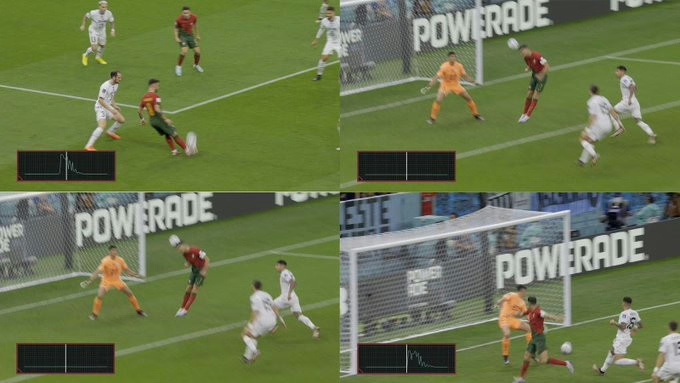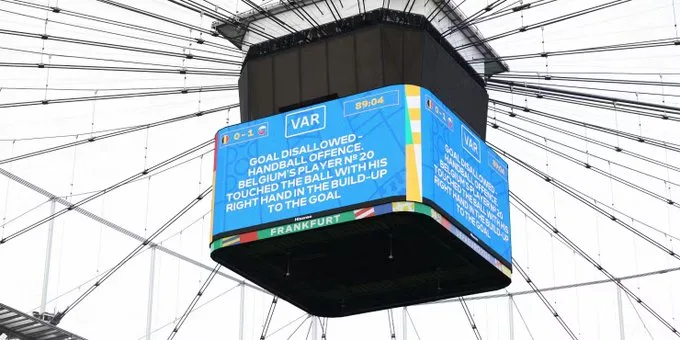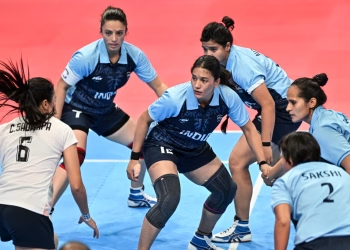UEFA Euro 2024 : The UEFA Euro 2024 tournament in Germany is turning heads not just for its high octane football action but also for the introduction of cutting edge technology borrowed from cricket – the Snickometer. This innovative tech, familiar to cricket enthusiasts, is now making waves in the world of football, promising to enhance the accuracy of officiating and, inevitably, stir up some controversy.

Let’s have a look into more details: UEFA Euro 2024
Originally a staple in cricket, the Snickometer – or “Snicko” – is used to detect slight touches of the ball on the bat, aiding umpires in making crucial decisions. The technology employs high frequency microphones to capture the sound of the ball making contact, a method that’s proven invaluable in cricket’s decision review system.

But how did this cricket specific technology find its way into the heart of European football’s premier competition?
The Snickometer’s Debut in Football
The Snickometer technology first transitioned to football during the FIFA World Cup 2022 in Qatar, where it was embedded in the match balls to aid in semi-automated offside decisions. Its success there paved the way for its expanded role in UEFA Euro 2024, where it’s now part of the broader VAR (Video Assistant Referee) system.

This year, the Snickometer made its Euro debut in a dramatic fashion during Belgium’s stunning 1-0 loss to Slovakia. The microchip inside the ball played a pivotal role in ruling out a potential equalizer by detecting a handball in the buildup – a decision that left fans and pundits buzzing.
How Snickometer Works in Football
At the core of the Snickometer system in football is a sophisticated microchip embedded within the Adidas match balls. This chip, known as “connected ball” technology, can detect even the minutest touch, recording data at an astonishing rate of 500 times per second.

Here’s how it enhances decision making on the pitch:
Offside and Handball Detection:
The Snickometer tracks the ball’s interaction with players to determine precise moments of contact. This data is crucial in confirming whether a player was offside or if a handball occurred before a goal.
Integration with VAR:
The technology works seamlessly with VAR, providing real time data to assist referees in making accurate decisions. For instance, during the Belgium vs. Slovakia match, the system confirmed a handball by Lois Openda, leading to the disallowance of Romelu Lukaku’s goal.
Transparency and Clarity:
Fans and players are now presented with visual data akin to a heartbeat monitor, showing spikes when the ball is touched. This added transparency helps explain controversial decisions, aiming to reduce disputes over officiating calls.
The Impact of Snickometer on Euro 2024
By delivering precise data on ball contacts, the Snickometer ensures that referees can make more informed decisions. This technology minimizes human error and helps uphold the integrity of the game, particularly in high-stakes situations where every decision can be pivotal.

The introduction of Snickometer technology is also changing how teams approach their gameplay. Players are now aware that every touch is scrutinized, which could lead to more cautious and disciplined play, especially in the box where handball rules are strictly enforced.
Despite its benefits, the Snickometer hasn’t been without its detractors. Some fans feel that the intrusion of technology detracts from the spontaneity of the game. The decision to disallow Belgium’s goal against Slovakia sparked debate among pundits, with opinions split on whether the call was fair.

Belgium’s manager, Domenico Tedesco, accepted the ruling but expressed frustration, reflecting a broader sentiment among those who feel that the game’s soul is being overshadowed by technology.
The Future of Snickometer in Football
As UEFA Euro 2024 progresses, the Snickometer is likely to play an increasingly prominent role. Here’s what we can expect:
With the Snickometer providing rapid and precise data, referees can make quicker decisions, reducing stoppage times and keeping the game flowing.Given its success, we could see the Snickometer being adopted in other major football tournaments and leagues worldwide, setting a new standard for match officiating.While the technology enhances decision-making, it also opens up new areas for debate about the impact of technology on the sport. Football’s governing bodies will need to navigate these discussions carefully to balance innovation with the essence of the game.
The Snickometer’s introduction to football is a testament to the sport’s evolving landscape, where technology plays an increasingly vital role. As UEFA Euro 2024 unfolds, fans will witness firsthand how this cricket-derived innovation influences the beautiful game.
Read more : T20 World Cup Super 8: Rain Clouds Threaten to Overshadow T20 World Cup Super 8 Matches in the Caribbean
FAQ
What is the Snickometer?
It’s a technology that detects small touches on the ball using a microchip inside








